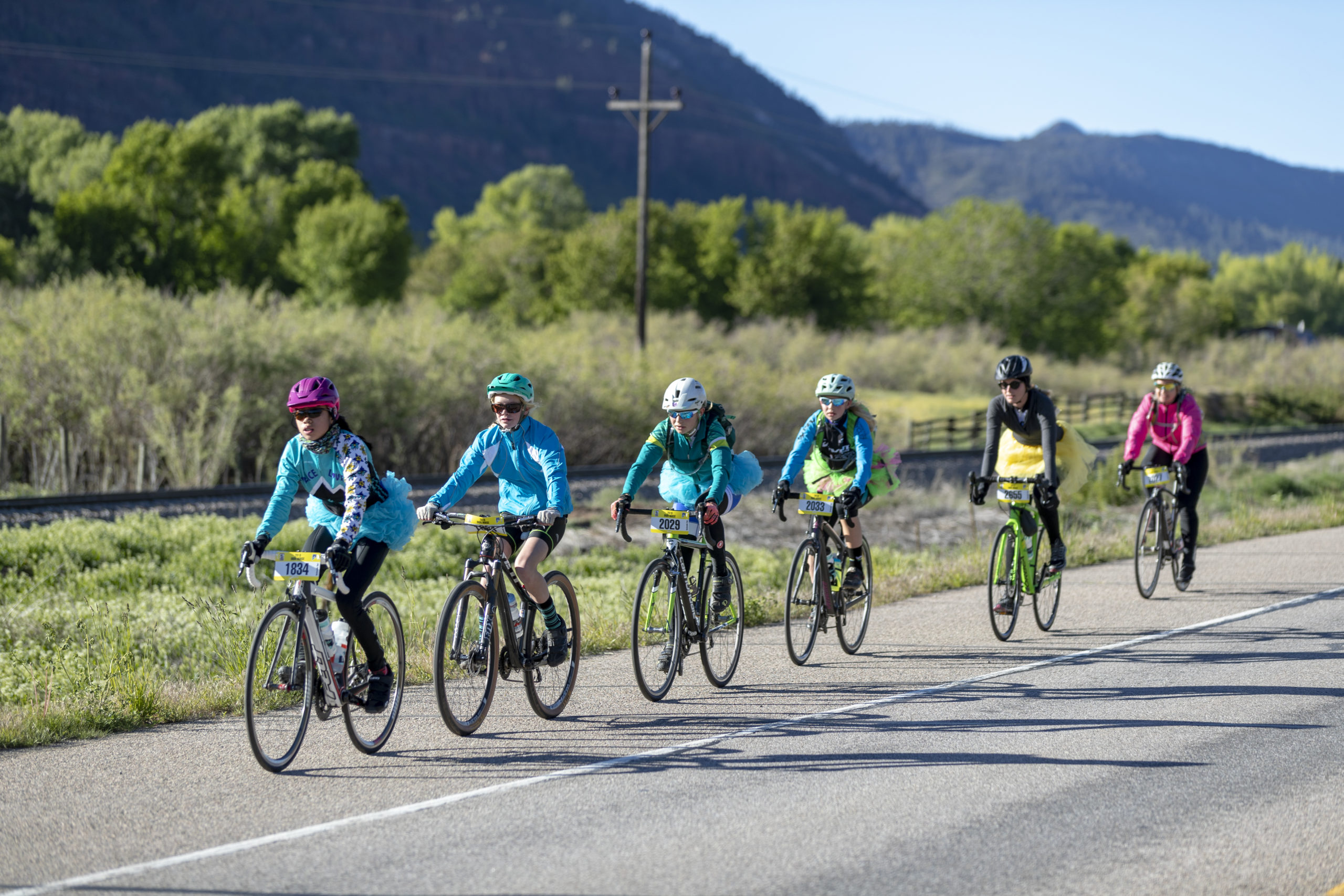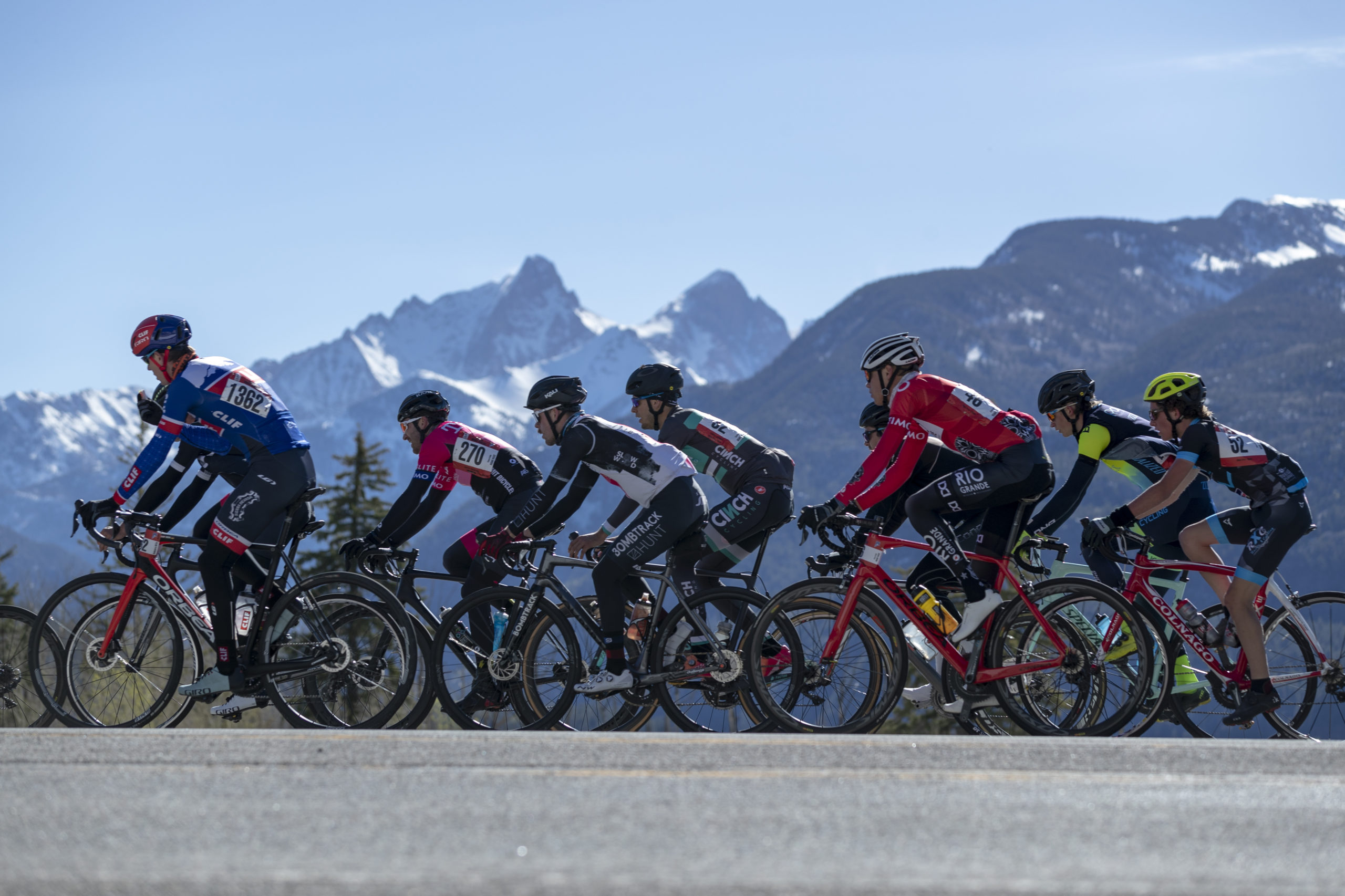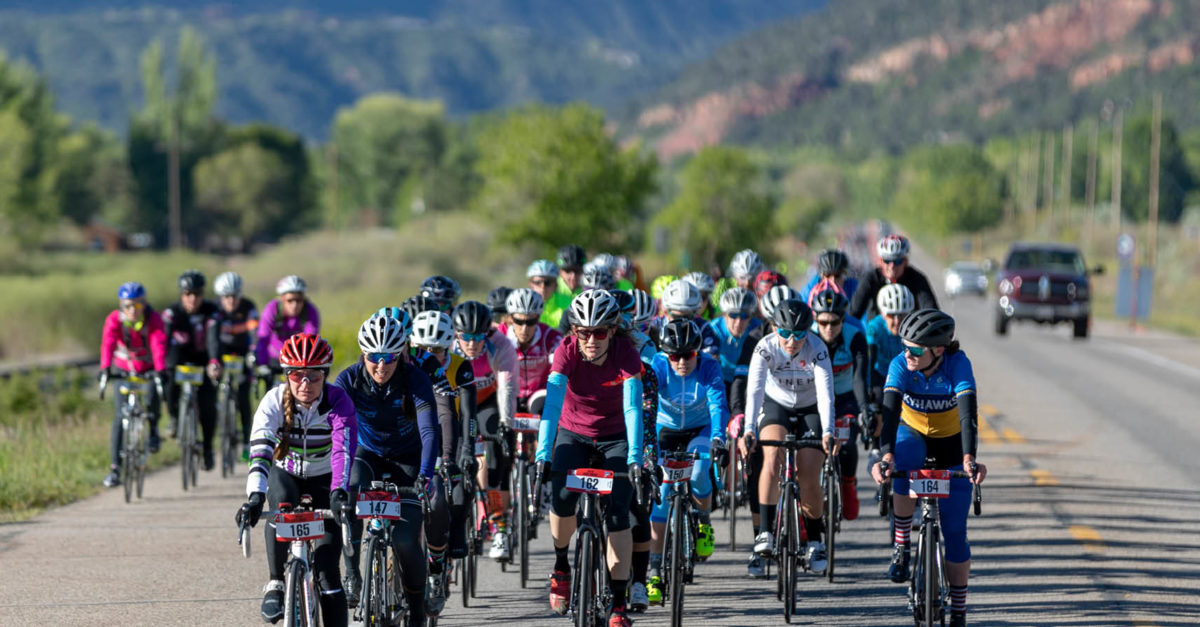Racing the Railroad
One of America’s most treasured bike races was born out of a wager in 1971. Tom Mayer bet his brother Jim, a brakeman, that he could outrace the locomotive from Durango, Colorado, to Silverton, Colorado, on his bike—which he did. Others wanted to do the same, and a small event was organized the next year. Since then, the Iron Horse Bicycle Classic has grown in popularity and prominence. Iron Horse director Gaige Sippy, a participant himself, discusses this Memorial Day weekend tradition.
How did you get involved with the Iron Horse Bicycle Classic?
I grew up in Albuquerque, New Mexico, which is a few hundred miles south of Durango. During college, I came up here to ride the event and was pretty enamored of it and the town, so I came back and worked in the bike shop and immersed myself in the Durango cycling scene. After graduation, I moved back to Albuquerque, but I eventually decided that I wanted to raise my family here. By chance, the bike shop I had worked at was owned by the founder of the event, Ed Zink, and they were looking for someone to take over in 2007, so I became the director.
How many people participate? Where do they come from?
In 2019, we had 3,400 riders for all of our races. And, as Ed would tell you, in the early 1970s, he invited anyone who had a bicycle and begged them to come out to the starting line. So it has certainly grown—in fact, it’s the second-oldest continuously run cycling event in the country.We have, on average, about forty-four states represented, and a couple years ago we had riders representing all fifty states. But the bulk of our ridership, probably 70 percent, comes from Colorado, New Mexico, and Arizona. We’ve also had Australians, lots of Europeans, and some riders from Japan. So we’re certainly a bucket list item for cyclists everywhere. We also have a lot of folks that come back year after year; some have participated in the event thirty or forty times.
How many people help organize the event?
We rely on about 250 volunteers to put the event on. It takes five law enforcement agencies because riders travel through a patchwork of counties and a portion of US highway Route 550 is closed for the event. We also have several EMS departments that support the event.
How has it helped the community?
It’s made a very strong economic impact on our town, bringing in millions in revenue. And we help the community at large—we helped fund a new breast care center here in town, among other care facilities.
I’ve been racing for over thirty years, and many of the cycling events that I went to ten or twenty years ago are gone. So the fact that this one has thrived all these years is not something we take lightly. We understand that it’s a community effort, and I spend a lot of my time making sure the community at large is proud of the event.

Tell us a little bit about the various races:
The Iron Horse Bicycle Classic, in its true sense, is the fifty-mile tour, which pits the train—a genuine steam engine from the 1800s—against the people riding their bikes on the closed highway. The event begins in Durango when the train pulls up and blows its whistle, and thousands of people race the train to Silverton. It’s pretty spectacular.
There’s also a forty-seven-mile race to Silverton, where people compete against each other for a placing and time. These Saturday events have been our mainstays for decades. They take place around the same time and on the same route, but we start the competitive race on the north end of town, and the race against the train on the south end of town.
On Sunday, we do another round of events, which range from a kids race to a gravel race to a mountain bike race. The mountain bike race is unique because we bring the bikers into town and they ride through a brewery as part of the course.
Our Iron Horse organization has also run thirteen national mountain bike championships here and hosted the first ever mountain bike world championships in 1990. So Durango has a long history of fostering mountain bike racing in our country and the world.
How do the elements and the elevation impact the cyclists?
The weather is always our biggest obstacle. In our part of the country, when you have 10,000-foot mountain passes you’re going over, winter doesn’t necessarily stop in May. In fact, we’ve even gotten snowstorms during the event. For instance, last year, the sides of the road were covered in snow— it looked like February. The temperature is different, too. Even though the sun is out, when you’re going downhill, the wind blowing off the snow at that elevation is much colder. The racers’ fingers frequently get cold going downhill, so they have a hard time pulling their brake levers without full-fingered gloves—but they usually don’t realize it until it’s happening. That certainly becomes a bit of a risk when you’re going down mountain passes, where your speed can reach over sixty miles an hour.
We have an elaborate system to help manage it all, including several aid stations along the way for people to pick up extra supplies and buses with blankets to warm people in. As far as elevation goes, you have 30 percent less oxygen at 10,000 feet than you do at sea level. And that takes its toll when you’re just standing around, let alone pedaling a bike up mountain passes—your lungs aren’t as efficient. We can always recognize the folks who have had a harder time than others at the end of the race: they’ll be sprawled out on the grass.

Do participants bring extra essentials?
We always recommend that they take a full-arm-length jacket with them for the top of the climb. And, of course, we heavily stress to folks that they need long-fingered gloves, perhaps a hat that they can wear under their helmet, and a good supply of food and water because you end up eating and drinking more than you think even though it’s cold out.
How long do the races take?
About two to two and a half hours for the fastest road racer and three and a half to six hours for the folks riding the tour against the train. We actually pull riders off the road after six hours, about twenty-five or thirty cyclists per year, because we need to reopen the highway. At that point, they’re always happy to get in the van and ride down to Silverton—when you’ve been on a bike for six hours at that elevation, you’re just plum tired out.
What’s the secret to this event’s long-term success?
First, in this day and age, it’s all about having something unique. We involve a steam engine train, and we think this is the only race of its kind anywhere in the world. We also have a closed national highway across mountain passes, so you have the ultimate quiet up there with no cars going by you. And we have a very supportive community that puts its arms around the event. If any of those three went away, I think the event would go away.
How does the event observe Memorial Day weekend?
Around five years ago, we started putting dozens of military veterans, Blue Star mothers, and Gold Star families on the train. We provide meals for them, and we have a nice ceremony at Memorial Park in Silverton, where the race ends. Military members participating in the race also come over and join the ceremony after the race.
The great thing is it ties together what the weekend is all about. It’s not just about riding your bike: the fact that we have these freedoms is why we can ride our bikes. It’s a big thank you for what our servicepeople have given up so we can do what we do.
Is there anything new planned for going forward?
We’re putting a lot of work into our fiftieth race in 2021. We want to hearken back to the past with some events, and we want to introduce some new events. I’m also stepping away from the event after the fiftieth. I was here when we celebrated the fortieth, and I’m going to take us to the next milestone. I hope it makes a perfect swan song for me to step away and let the next crew carry it into the next fifty years. I feel blessed, and never dreamed that the race would have turned into all this.
For more info, visit ironhorsebicycleclassic.com. Photography by Iron Horse Bicycle Classic.









